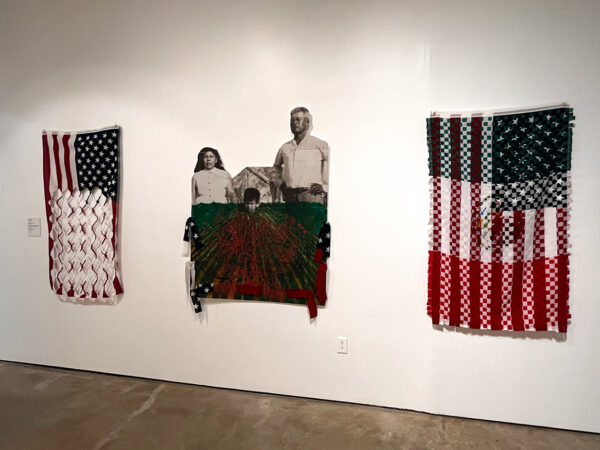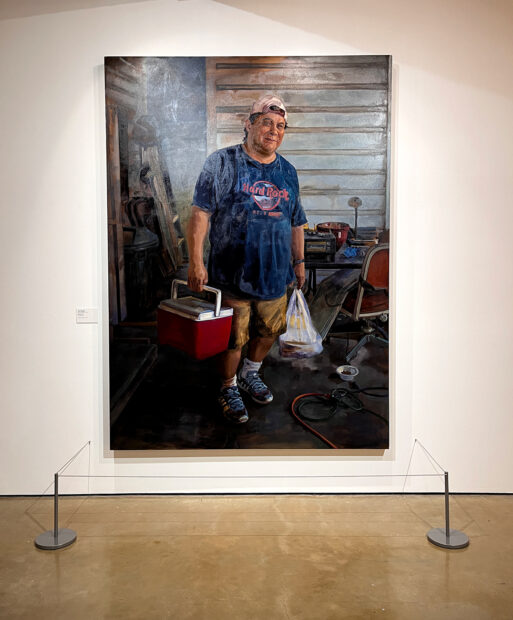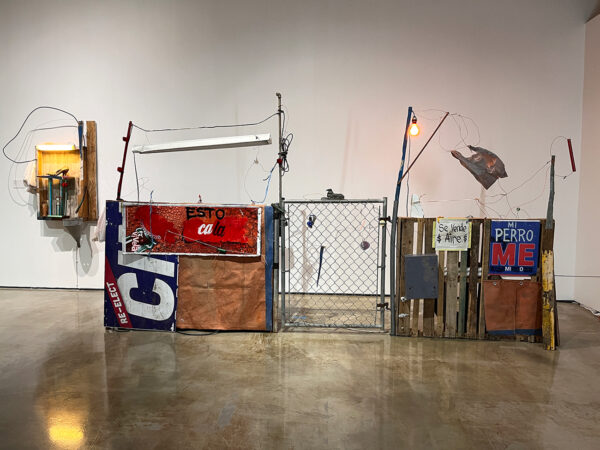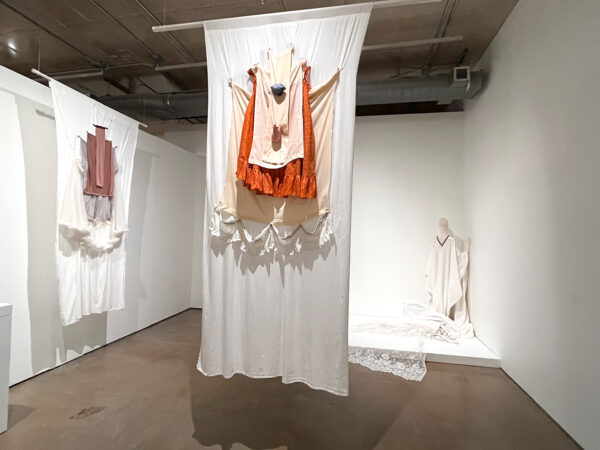Para leer este artículo en español, por favor vaya aquí. To read this article in Spanish, please go here.
In January, I began hearing rumblings in North Texas about a San Antonio exhibition surveying Latinx artists working throughout the state. My interest was piqued, but I tabled exploring the details as I made preparations for a week-long Glasstire trip to South Texas. The minute I arrived in Laredo, I could tell the excitement over Soy de Tejas: A Statewide Survey of Latinx Art was bubbling. As I made my way through the Rio Grande Valley and up to Corpus Christi and Rockport, it was clear that the show was significantly impacting and uniting Latinx artists. I came away from the South Texas trip with a new understanding of the region and the artists and arts workers who call the area home. I also left with a new sense that the exhibition coming to San Antonio would perhaps be the most consequential survey of our state’s Latinx artists in recent memory.
Eager to see the show in person, I went to Centro de Artes on its opening weekend. I was overwhelmed by the breadth of the exhibition, which includes artists working in a variety of mediums and from all of the far-flung regions of the state. It struck me that such an expansive exhibition representing the diversity of Latinx art and artists is rare in Texas, which, according to the recent American Community Survey by the U.S. Census Bureau, has a Hispanic/Latino population of 40.2%. When representation is limited, it becomes easy for viewers to make broad generalizations about topics, themes, and styles of Latinx art. Consequently, it becomes just as easy for people to pigeonhole the artists and what they’re trying to say. Soy de Tejas obliterates this narrative, illustrating that Latinx artists are not a monolith and cannot be neatly placed in a box.
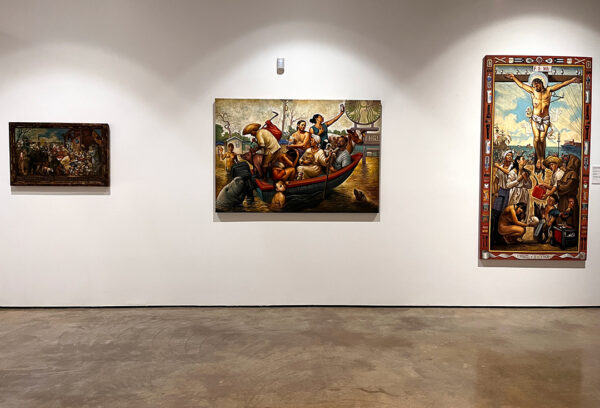
Installation image of works by Patrick McGrath Muñiz on view in “Soy de Tejas” at Centro de Artes, 2023.
Artist Patrick McGrath Muñiz, who lives in New Territory, a suburban neighborhood southwest of Houston, noted, “It is a solid show embracing diversity in many divergent styles, mediums, and formats. The narratives were very similar in the sense that we all shared similar background stories, and there was a sense of struggle and search for ‘self’ and inner meaning within the context of migration and transitory destinations.”
An equally important aspect of the show is seeing familiar works in new contexts. Walking into the exhibition, I encountered pieces about labor and family by Dallas-based artists Tina Medina and Christian Cruz, alongside works by Raul de Lara, who currently lives in New York City, and Nacogdoches-based Arely Morales. Seeing Medina and Cruz’s work in conversation with that of other, unfamiliar artists, who are approaching similar topics but working in different mediums, brought a new dimension to their pieces.
Medina’s mixed-media pieces incorporating family photographs spoke to a generational history of labor, but in conversation with Morales’ Mi Apá, a monumental portrait of her father heading out for a day of work, the narrative was extended into the present day. Latinx labor has been a part of the infrastructure of Texas for generations, and continues to be the state’s backbone. This was not a previously unknown fact, but the pairing of these artworks highlights this narrative and provides a new lens through which to explore Medina’s art. I imagine that with works by other artists across the state, visitors from various Texas regions will have a similar experience.
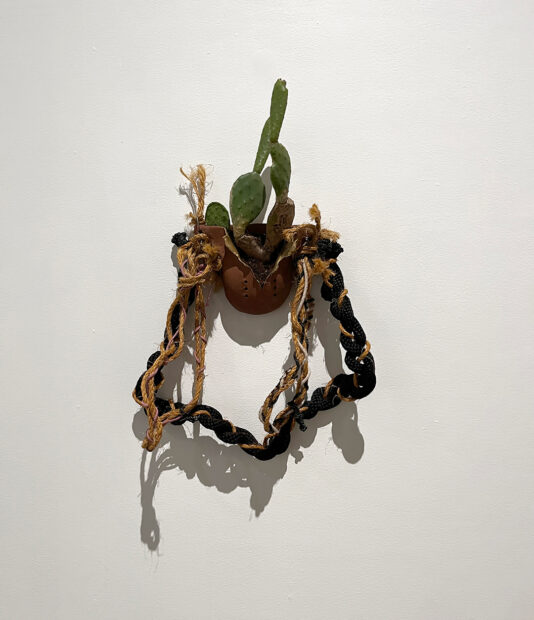
Vick Quezada, “Uprooting the Archaeological,” 2021, sculpture, ceramics, rope harness, soil, Opuntia Cacanapa.
Vick Quezada, who was born in El Paso and currently lives in Western Massachusetts, remarked at their surprise of seeing so many artists “working with Rasquache, assemblage art, and found objects.” Along with Quezada, artists in the exhibition working in this style included Raul de Lara, Josué Ramírez, Cande Aguilar, Bella Maria Varela, Gil Rocha, José Villalobos, Angel Cabrales, and Ruben Luna. Though rasquachismo is often associated with artists working near the U.S./Mexico border, Soy de Tejas illustrates how artists in the Rio Grande Valley and beyond continue to employ this style.
Rigoberto Luna, the curator of the show, admitted that initially he had not considered giving equal weight to Texas’ various regions, but as he planned the exhibition over the last few years, it became clear that a considered, statewide approach was necessary if the show was to be a true survey of Latinx artists. Luna was inspired by Phantom Sightings, a comprehensive exhibition of Chicano art co-curated by Rita Gonzalez, Howard N. Fox, and Chon A. Noriega, that traveled across the United States from 2008 to 2010. It came to San Antonio’s Museo Alameda, which was previously housed in the building that is currently home to Centro de Artes.
Luna said, “The idea of this show is something that I’ve thought about and discussed with artists for years. We’ve talked about it so much because it’s been a pipe dream for the most part. While curating at Presa House [the San Antonio gallery Luna runs with Jenelle Esparza] has been incredibly fulfilling, an opportunity to bring together a more extensive collection of artists working at a museum scale was an exciting thought. No one was going to offer us this opportunity, so when you get the chance to propose an exhibition in a space centered on the Latino experience in the U.S., it’s a gamble worth taking.”
When Luna submitted his curatorial proposal for the exhibition in 2018, he imagined the show might have as many as 30 artists. He was notified in 2019 that his proposal had been accepted, and he began planning the exhibition in 2020. During the planning process he amassed a list of potential artists that held over 200 names.
Luna told me, “I’m a list maker, so I keep lists of artists for various reasons, but I had four years since I was approved to do this show, and before that, I had already compiled a list of artists, so getting to 200 was easy. This particular 40 came down to fit, but I have other projects I’d like to do, and my upcoming ELA27 at Mexic Arte [the museum’s annual Emerging Latinx Artists show of works by Texas-based Latinx artists] is coming out of my same pool with new results.”
One name at the top of his list for Soy de Tejas was Christian Cruz. Luna saw her installation Pink Collar // Children’s Linen at the Nasher Sculpture Center in Dallas and found it compelling. He confessed that he was nervous to approach the artist about being included in the show, but once she agreed it made it easier for him to approach others. Of the 40 artists in the exhibition, Luna was familiar with most of them at the onset of his planning, but some of the younger emerging artists were unexpected finds.

Installation image of works by Christopher Nájera Estrada on view in “Soy de Tejas” at Centro de Artes, 2023.
When Luna and his partner Jenelle Esparza visited Fort Worth last fall, they went around to see various galleries that were open during the Fort Worth Art Dealers Association’s Fall Gallery Night. That evening at the Fort Worth Biennial, hosted at Arts Fort Worth, Luna saw Christopher Nájera Estrada’s art in person for the first time. Though he had seen Nájera’s work virtually, seeing it in person cemented his decision to include the artist in the show.
Though Nájera is one of the emerging artists featured, he is not the youngest. The artists in the exhibition range in age from 27 to 52, which is just another way the show surveys Texas’ artistic field. Though I couldn’t attend the opening reception, I asked some of the artists about that experience.
Cruz explained, “It felt like a national show. You know that feeling when you see a show at a big museum in a major city like LA, or NYC, or Miami Basel, it felt like that. And sure enough, I ran into my friend who lives in Chicago and was visiting with her partner. Other times, I was running into someone I admired and began to tell them how grateful I was for them creating a path to walk on. And they were all so kind, and humble and complimented my performance work downstairs… When I wasn’t spilling my heart to the elders, the younger ones (20s; I’m in my 30s) were spilling their heart out to me! Say[ing] thank you and that it means a lot to them to have my support over little things like sharing posts or taking photos of their work. And how I inspired them because I was a working artist and had a lovely family (my 4-year-old daughter and husband came too).”
Many of the artists who attended the reception echoed these same sentiments. Josué Ramírez, who is based in the Rio Grande Valley, said, “It was a whirlwind of a night, a big reception and well worth the trip. [I met] so many awesome folks and reconnected with others, but just the immense beauty collected in the space was inspiring. I left refreshed as a creative and part of a badass community of makers and chingonxs.”
While Luna identified and exhibited an array of talented artists, each deserving of their own individual spotlight, the power of Soy de Tejas lies in the community it has established. Connecting artists across generations, across disciplines, and across regions, the exhibition unites Latinx artists, celebrating their differences and similarities in a way that is rare in Texas’ art scene. For the audience, this exhibition is a learning moment, an opportunity to expand their thinking on what Latinx art is and who the key players in our state are. For the artists, this experience sets a new standard, a new expectation for what is possible, and acts as a quick guide as to who their peers are. It’s an opportunity to build connections, forge relationships, and sow seeds that will shape the future of Texas art. Although individual artists may sometimes feel isolated in the traditionally white spaces of the art world, Rigoberto Luna has brought a community together that has been pining for this moment.
Soy de Tejas: A Statewide Survey of Latinx Art is currently on view through July 2, 2023 at Centro de Artes in San Antonio.


